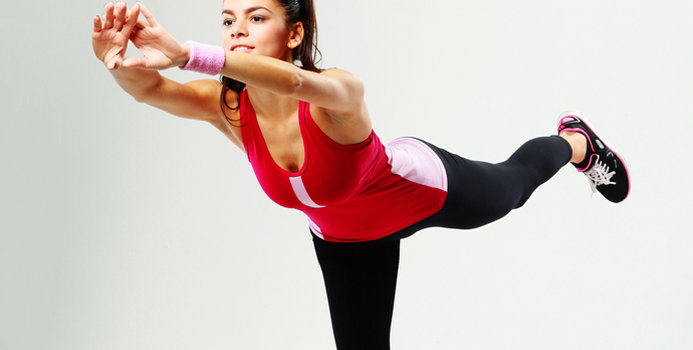People tend to think of balance issues as a problem for older adults — and it is. In fact, the Centers for Disease Control and Prevention estimate that over 800,000 patients per year are hospitalized due to a fall injury. But, it's a gradual progression. You may not even notice so much until one day you seem to trip over nothing and can't catch yourself. Hopefully, you only end up with a bruise that heals quickly, but don't wait. Instead, be proactive and improve your balance to avoid falling, and the injuries that come with it.
Rule Out Other Causes
Before you assume that your balance is just bad, get checked out by your doctor. Balance problems can be caused by vestibular issues in your ears, or even eye problems. If your on medications, read the labels. Some may cause dizziness or have other side effects that may affect your balance. Once you rule out any health issues, start working on balance exercises.
Shift Your Weight
Stand with your feet hip-width apart, knees slightly bent. Keep your weight equal on both legs. Slowly, shift your weight to the right leg, leaving the left foot on the floor just for balance. From there, try to lift the left foot off the floor and hold yourself on your right leg for up to 30 seconds. If you can't do 30 seconds, see how long you can hold. Even if it's two seconds it will give you a starting point. Place your left foot back down, and shift to the left, lifting the right foot off the ground. Repeat up to 10 times each side as you get stronger.
You may only be able to shift your weight and not lift your foot yet. That's okay. With practice and consistency you will improve.
One Leg Balance
With the weight shift, you are trying to let your leg hover over the floor to catch your body as needed. This time, you are going to actually lift your foot further away from the floor and balance on one leg. Use a chair or the wall if necessary when you begin. Shift your weight onto your right leg. Focus your gaze on an object that is not moving in order to assist your balance. Bend your left knee, lifting your foot behind you. Hold for up to 30 seconds, trying not to grab the chair or wall for support. Switch sides. Repeat up to 10 times each leg as your balance improves.
Add Some Movement
Once you can balance in a stationary position, add some movement. Start slow by gently moving your arms while you balance on one leg. Lift your right arm up in front of you and back down. Then your left arm. Try bringing them overhead. You can also move the leg that is lifted. Bring your knee up and down without touching the foot to the floor. All of these things will challenge your balance even further.
Build Strength
Lower body weakness can contribute to balance issues. If you are not a regular exerciser, you want to at least add in some body weight exercises to improve function and balance. Add some chair squats along with your balance exercises. Make sure that the chair you use won't slide out from under you. Stand with your feet hip to shoulder-width apart and keep your feet close to the chair. Sit down slowly with as much control as you can. Shift your body forward and press through your heels to stand up, squeezing your glutes. Repeat up to 15 times for one to three sets. You may need to use your hands to push up and down at first. As you get stronger, try not to use your hands at all.
You can add in other exercises such as lunges, glute bridges or regular bodyweight squats to also improve lower body strength and work on balance.
[Image via Shutterstock]



